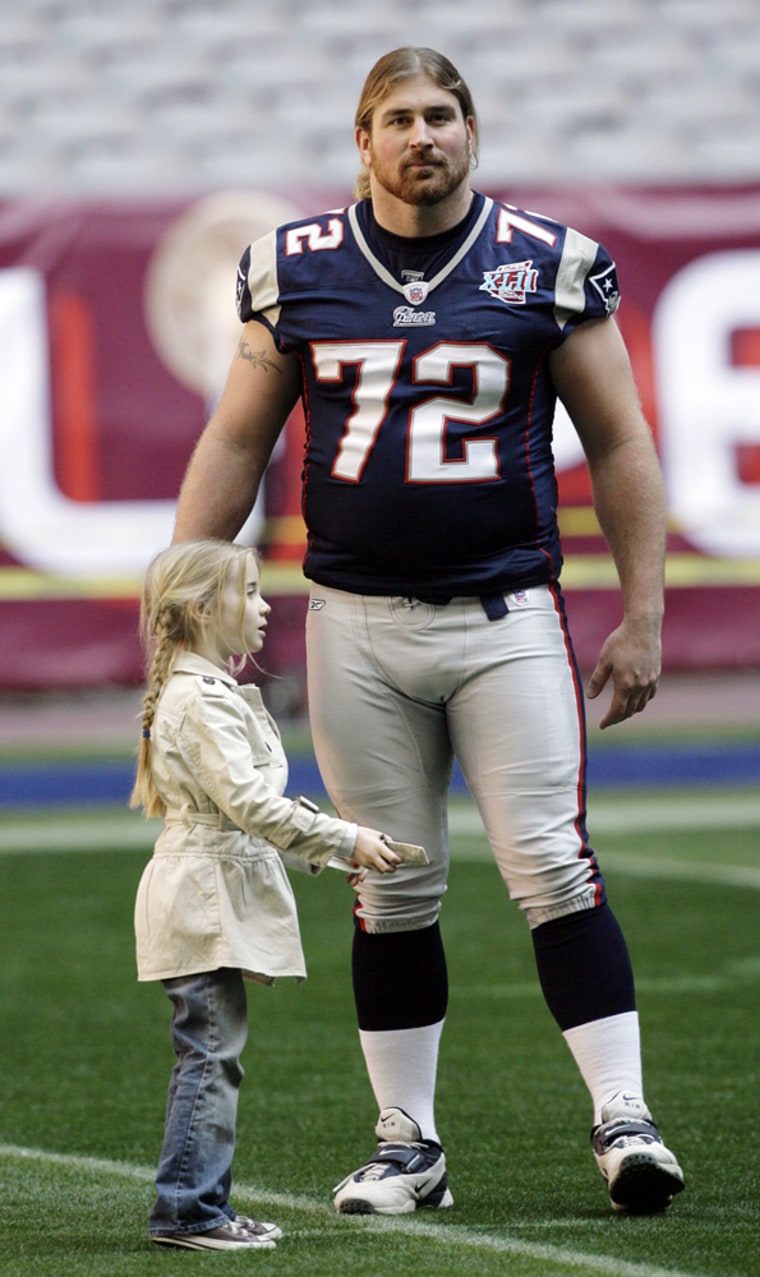In front of Northwestern University professor Tim Calkins sit two dozen students, armed with three-ring binders and surrounded by bottled waters. Calkins eyes the class and asks them to describe a negative brand. The answers come quickly.
“Britney Spears!”
“Pit bulls!”
After one student says “Patriots,” the room erupts in laughter. Another student — about 6-foot-4 and 305 pounds — turns around to glare at the jokester.
”I’m filming this whole thing,” says New England tackle Matt Light, prompting even more laughter.
That’s one of the more humorous moments during a serious get-together. At Northwestern’s Kellogg School of Management, 23 current National Football League players and one retired player, Lance Legree, just spent four days immersed in classes and study groups at the James L. Allen Center. While other NFL players worried about potential free-agent contracts, this group tackled money in a different way.
On Tuesday, Green Bay Packers quarterback — and future Hall of Famer — Brett Favre announced his retirement after 17 seasons. Favre will be leaving pro football a multimillionaire, his financial future more than secure. But for the majority of former NFL players, this is not the case. Though the average NFL salary seems high (above $1.4 million a year), that doesn't guarantee a leisurely retirement when the typical career is shorter than a U.S. presidential term.
The NFL Players Association and the league have created a program that will help prepare players for life after football and to help them get a leg up on business ventures they have already forged.
More than 110 NFL players this year will go through the NFL Business Management and Entrepreneurial Program, offered at Harvard Business School, the Stanford Graduate School of Business and the Wharton School of the University of Pennsylvania along with Kellogg.
Given that the average NFL retiree is about 26 years old and often wracked by injuries, there is good reason why players would forgo a vacation in Mexico to endure 12-hour days learning about topics like value creation amid icy winds whipping off Lake Michigan.
”You have some of the greatest instructors, and you have the full attention of the staff,” said Light, 29, who attended sessions at Harvard and Wharton during previous off-seasons and who is focusing on real estate properties outside of football.
”The biggest thing that appeals to me is the business side of it. I get business deals all the time. How do you choose?” explained 28-year-old Washington wide receiver Antwaan Randle El.
All players who wish to join the NFL Business Management and Entrepreneurial Program must send an application to the NFL office. “They have to show an interest in business,” said NFL spokesman Dan Masonson.
Depending on which school they attend, accepted applicants pay $5,000 or $10,000 to enroll in classes such as Equity & Debt Financing and Angel Investing (under the NFL Collective Bargaining Agreement, player educational expenses of up to $15,000 a year at institutions of higher learning are reimbursed).
Once a program ended in a recent year, Masonson said a survey showed 48 percent of players decided to pursue what they had originally thought they were interested in, while 43 percent did not, because the program revealed reasons to curtail their interest. Masonson found the latter number important because the program prevented players from entering a field they likely would have abandoned down the line.
Kellogg professor Steve Rogers, who chooses the classes, recruits professors and oversees the annual session in Evanston, said the program — in its fourth year — is set up like the other executive management programs at the school. Nothing is dumbed down. Players must attend all classes.
Rogers said financial education is crucial for NFL players.
”They don’t learn on the job in football. They shouldn’t be learning about entrepreneurship during their first investment,” said Rogers, who teaches entrepreneurial finance at the school.
NFL students are so serious that Rogers said the only social activity involves soft drinks before dinner every night. (He has found that most players don’t want alcohol.) Last year, the NCAA basketball championship game was on, and the school set up a big-screen TV and snacks for players once study groups ended at 9 p.m.
”They stayed in their study groups until 11 p.m.,” he said. “I was in there watching the game by myself.”
This summer, Northwestern will host a similar program for about 20 NBA players, the only one of its kind in the country for basketball pros (it is moving from Stanford after a two-year stay there). He would like to eventually unveil an offering to teach all pro athletes – from NASCAR drivers to NHL players – about different industries.
Back in the classroom, Kellogg’s Calkins is trying to get the players to think of themselves as brands, first by introducing examples of well-known products.
”When you see Dom Perignon, you think …”
Rivals on the field in the NFC South, two players collide once again off it.
”Nasty,” says Atlanta’s Chauncey Davis.
”Classy,” says Tampa Bay’s Phillip Buchanon.
When the 90-minute session on brands is over, Light – who starred in a 2005 Visa commercial as a pillar of protection for quarterback Tom Brady – is asked if he feels like he’s protecting a brand when he’s steering rushers away from the NFL marketing powerhouse.
”No,” he said. “He does a pretty good job of protecting his brand on his own.”
